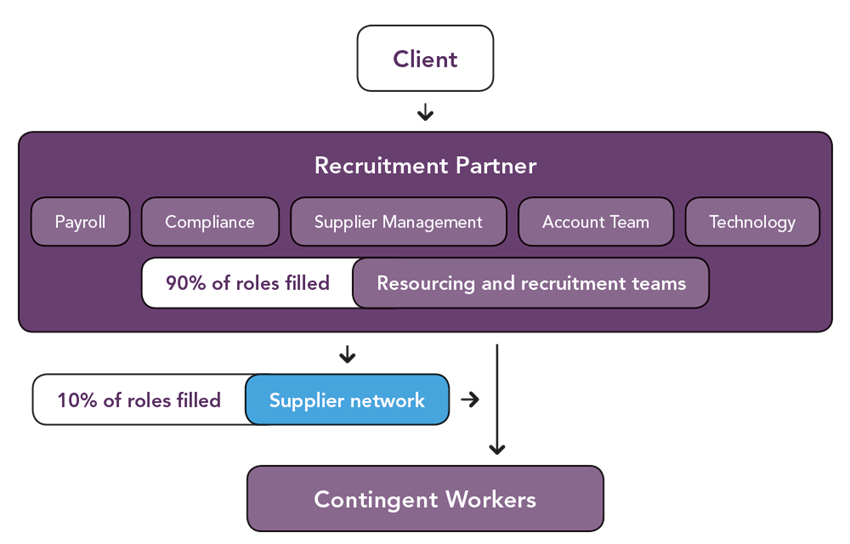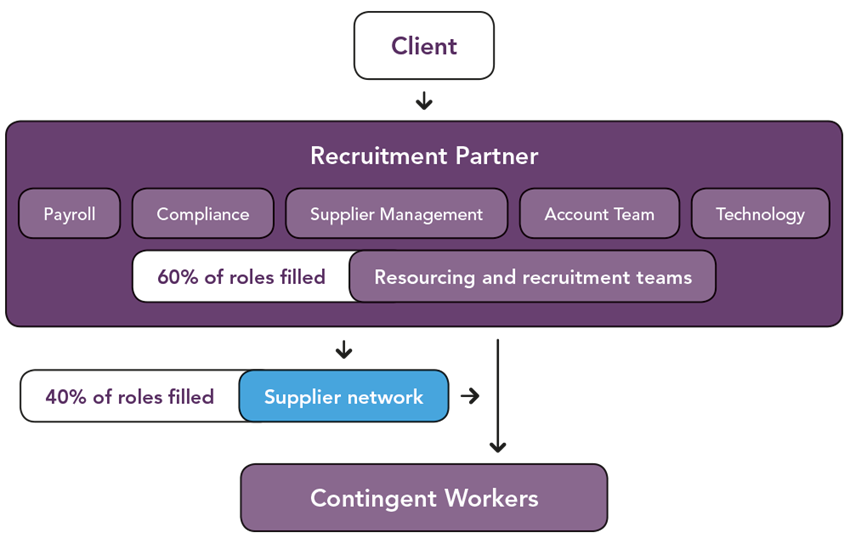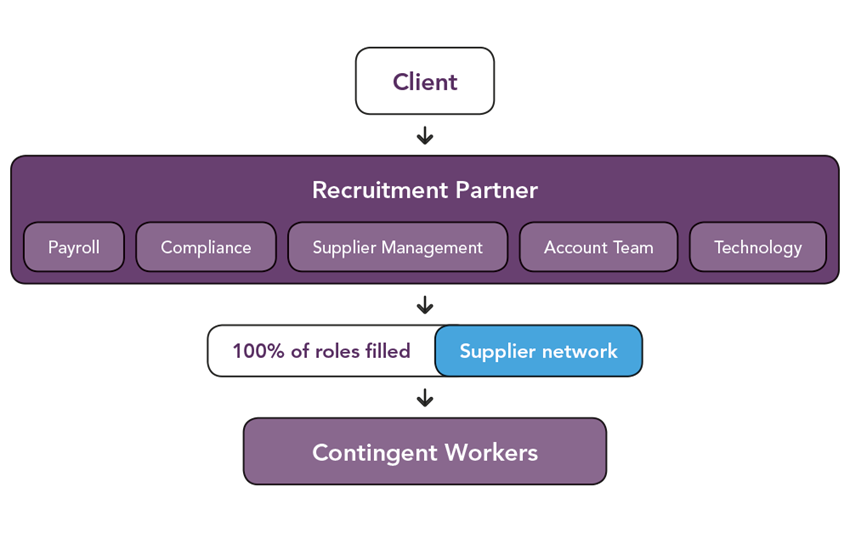Many organisations recognise the benefits of outsourcing their recruitment. From cost savings and efficiencies, to greater transparency throughout the hiring process, access to the latest recruitment technologies, reduction of risk and increased awareness of your brand through an enhanced candidate experience.
However, it can be overwhelming knowing where to start. We have developed a toolkit to guide organisations through the outsourcing process, from the initial idea of why you should outsource your recruitment, right through to implementing a model.
There are a myriad of factors that need to be taken into account and crucial decisions to be made about the different type of recruitment partnership which will benefit your organisation the most. The model you decide to implement will need to be the best solution for your requirements, both now and in the medium term, taking into account expansion plans, hard-to-fill positions, economic conditions and more.
We’ve outlined some of the standard recruitment models, so you have all the knowledge you need to select the right model for your organisation, and you can start to visualize what outsourcing your recruitment actually looks like.
Master Vendor
A Master Vendor recruitment partner aims to fill at least 90% of all requirements. Any positions unable to be filled by the Master Vendor are released to a second tier of suppliers, managed by the Master Vendor. The Master Vendor is also responsible for additional services such as inductions, bespoke invoicing arrangements, temporary staff care and legal compliance, with recruitment technology often incorporated as part of the service.
A Master Vendor recruitment partner is most effective in situations where you have a high concentration of one type of worker, for example, a large proportion of IT contract workers.

Master Vendor Pros
- A single point of contact for all recruitment requirements, one contractual agreement and a single invoice streamlines the process and increases transparency.
- Significant cost reductions are common with this model via improved agency fees, control over pay rates, quality of candidate shortlist, and improved invoicing processes.
- Reduced time to hire and improved quality of candidate owing to the dedicated account team and improved hiring manager experience.
Master Vendor Cons
- High quality second tier supplier may not be motivated due to limited volumes/opportunities.
- Other disciplines outside of the Master Vendor are often filled on an ad-hoc basis by multiple suppliers who may not abide by the standards or commercial requirements of the programme.
- The Master Vendor status may lead to complacency if KPIs are not regularly measured, monitored and reviewed.
Managed Service Partnership (MSP)
An MSP aims to fill at least 60% of all requirements, using a tight work network of preferred suppliers to support their recruitment activity. The most effective partnerships involve on-site coordination, control and reporting on all recruitment activity on your behalf. These partnerships also include searching, screening, interviewing, shortlisting and managing contractors, and often include technology and tailored solutions are part of the offering.
An MSP is ideal when your organisation has a large portion of contingent workers.

MSP Pros
- The recruitment partner is responsible and accountable for 100% fulfillment of all requirements to agreed quality and timescales, and the finds the best candidate for the job, regardless of the source.
- This partnership results in significant cost reductions via improved agency fees, control over pay rates, quality of candidate shortlist and improved invoicing processes.
- An on-site team will integrate into your business, resulting in improved quality of candidates that fit your organisation’s culture.
MSP Cons
- The recruitment partner may not engage appropriately or fairly with its supply partners, given an inherent desire to fill the maximum number of roles themselves.
- An MSP may lead to complacency if the KPIs are not regularly measured, monitored and reviewed.
Neutral Vendor
A Neutral Vendor is slightly different to the other models. Requirements are not filled by the recruitment partner directly, but by a large network of preferred suppliers managed by the recruitment partner. Thus, your Neutral Vendor recruitment partner suppliers’ will fill 100% of requirements. If the recruitment partner is part of a larger staffing group, you can also request those brands cannot supply workers, making the programme, by definition, strictly neutral.
A Neutral Vendor partnership can involve on-site coordination, control and reporting on all recruitment activity on your behalf. Recruitment technology and automated processes are at the heart of most successful neutral vendor partnerships.
This model is most effective in relation to large volume recruitment, typically over 800 workers, where the emphasis is on volume sourcing, time to hire pressures and efficient, scalable processes.

Neutral Vendor Pros
- The recruitment partner is acting solely with the intention of finding the best candidate, regardless of the source.
- As the recruitment partner doesn’t have a supply capability of its own in this agreement, the neutral vendor manages your supply chain impartially.
- There’s a significant reduction in overall recruitment costs through streamlined processes and rationalised agency fees.
Neutral Vendor Cons
- This model is often criticised for not cultivating warm relations with agency suppliers, leading to a disengaged supply chain which ultimately impacts the quality of service to you.
- Representing and safeguarding your brand in the candidate marketplace is not controlled by the recruitment partner, risking your brand.
Ultimately, it is important that you weigh up both the pros and cons of each model in order to ensure you select the most effective outsourcing model. For a complete guide on outsourcing your recruitment, download our ‘How to Outsource Your Contingent Recruitment’ toolkit.

